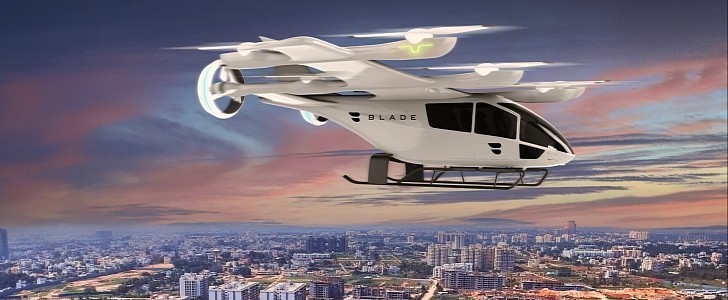Eve Air Mobility keeps on expanding its list of partners and announces a newly signed agreement with India-based company BLADE. The two plan to create an urban air mobility (UAM) ecosystem in the Asian country.
According to the latest information from the two companies, BLADE agreed to purchase up to 200 eVTOL (electric vertical take-off and landing) air taxi units from Eve Air Mobility. As per the agreement, Eve is also going to throw in its support, vehicle service, and its Urban Air Traffic Management (UATM) software solution.
In addition to all of the above, the deal also specifies that Eve and BLADE plan to kick off a three-month pilot project “connecting passengers using helicopters”. All that data collected through customer experience and operations will help with the further development of Eve’s solutions, from its aircraft to its UATM software and support services.
Speaking about the recently signed partnership, Eve’s co-CEO, Andre Stein, stated that India has the potential to be one of the largest urban air mobility markets globally. He added that his company looks forward to offering the people of India a zero-emission UAM solution that’s efficient, accessible, and quiet.
BLADE aims to initially start with 50,000 hours of flight time per year using Eve’s eVTOL aircraft.
The collaboration with the India-based air mobility company is just one of the many boasted lately by Eve. For instance, back in June, the eVTOL developer announced that it teamed up with Falcon Aviation to bring its urban air mobility solutions to Dubai. Many others are also interested in what Eve has to offer, with Nautilus Aviation in Australia, Republic Airways in the United States, and Helisul Aviation in Brazil, being just some of them.
As for Eve’s highly acclaimed air taxi, it is scheduled to enter into service in 2026. The specs of the aircraft are yet to be revealed, so all we know for now is that it features a conventional wing and tail design and has eight rotors fixed around the wing.
In addition to all of the above, the deal also specifies that Eve and BLADE plan to kick off a three-month pilot project “connecting passengers using helicopters”. All that data collected through customer experience and operations will help with the further development of Eve’s solutions, from its aircraft to its UATM software and support services.
Speaking about the recently signed partnership, Eve’s co-CEO, Andre Stein, stated that India has the potential to be one of the largest urban air mobility markets globally. He added that his company looks forward to offering the people of India a zero-emission UAM solution that’s efficient, accessible, and quiet.
BLADE aims to initially start with 50,000 hours of flight time per year using Eve’s eVTOL aircraft.
The collaboration with the India-based air mobility company is just one of the many boasted lately by Eve. For instance, back in June, the eVTOL developer announced that it teamed up with Falcon Aviation to bring its urban air mobility solutions to Dubai. Many others are also interested in what Eve has to offer, with Nautilus Aviation in Australia, Republic Airways in the United States, and Helisul Aviation in Brazil, being just some of them.
As for Eve’s highly acclaimed air taxi, it is scheduled to enter into service in 2026. The specs of the aircraft are yet to be revealed, so all we know for now is that it features a conventional wing and tail design and has eight rotors fixed around the wing.





